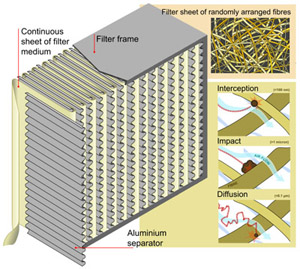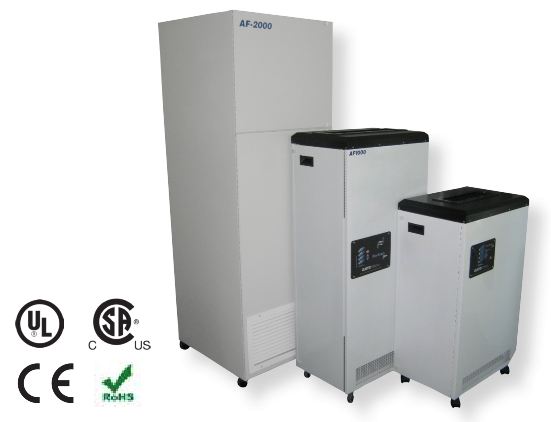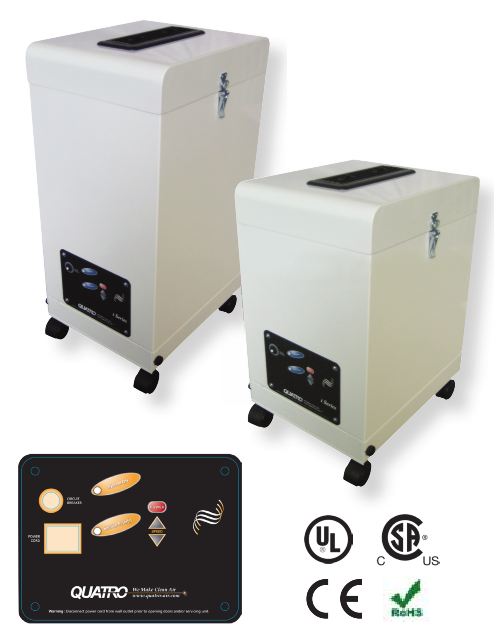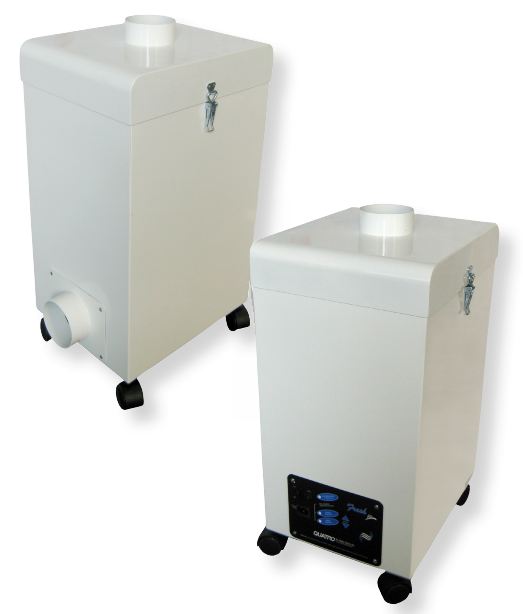WHAT IS A HEPA FILTER?
HEPA filters, by definition, remove at least 99.97% of airborne particles 0.3 micrometers (µm) in diameter. Some manufacturers use HEPA material in their filters and claim that these are HEPA filters. Quatro Air certifies our filters as HEPA which means that they go through a vigorous testing procedure and meet medical standards for filtration.
HEPA filters are composed of a mat of randomly arranged fibres. The fibres are typically composed of fiberglass and possess diameters between 0.5 and 2.0 micron. Key factors affecting function are fibre diameter, filter thickness, and face velocity. The air space between HEPA filter fibres is much greater than 0.3 μm. The common assumption that a HEPA filter acts like a sieve where particles smaller than the largest opening can pass through is incorrect. Unlike membrane filters, where particles as wide as the largest opening or distance between fibres cannot pass in between them at all, HEPA filters are designed to target much smaller pollutants and particles. These particles are trapped (they stick to a fibre) through a combination of the following three mechanisms:
diameters between 0.5 and 2.0 micron. Key factors affecting function are fibre diameter, filter thickness, and face velocity. The air space between HEPA filter fibres is much greater than 0.3 μm. The common assumption that a HEPA filter acts like a sieve where particles smaller than the largest opening can pass through is incorrect. Unlike membrane filters, where particles as wide as the largest opening or distance between fibres cannot pass in between them at all, HEPA filters are designed to target much smaller pollutants and particles. These particles are trapped (they stick to a fibre) through a combination of the following three mechanisms:
- Interception, where particles following a line of flow in the air stream come within one radius of a fibre and adhere to it.
- Impaction, where larger particles are unable to avoid fibres by following the curving contours of the air stream and are forced to embed in one of them directly; this effect increases with diminishing fibre separation and higher air flow velocity.
- Diffusion, an enhancing mechanism is a result of the collision with gas molecules by the smallest particles, especially those below 0.1 µm in diameter, which are thereby impeded and delayed in their path through the filter; this behaviour is similar to Brownian motion and raises the probability that a particle will be stopped by either of the two mechanisms above; it becomes dominant at lower air flow velocities
Diffusion predominates below the 0.1 μm diameter particle size. Impaction and interception predominate above 0.4 μm. In between, near the 0.3 μm MPPS, diffusion and interception predominate.
The filter resistance to flow is known as its pressure drop.
BreathEasy Pro Series
| more info |
BreathEasy Home and Office Series
| more info |
BreathEasy Central Series
| more info |
http://www.airpurifiers-r-us.com/index.html
Contact Us
- Toll Free: 1-888-395-0330 or 1-800-626-0664 (North America- Continental USA and Canada)
- Fax: 1 (419) 710-9876
- Outside of North America: 1 (514) 421-0658
You may also fax to us your information request: eFax: 1 (419) 710-9876 - Contact Us Form - Click on this link to send us message




No comments:
Post a Comment